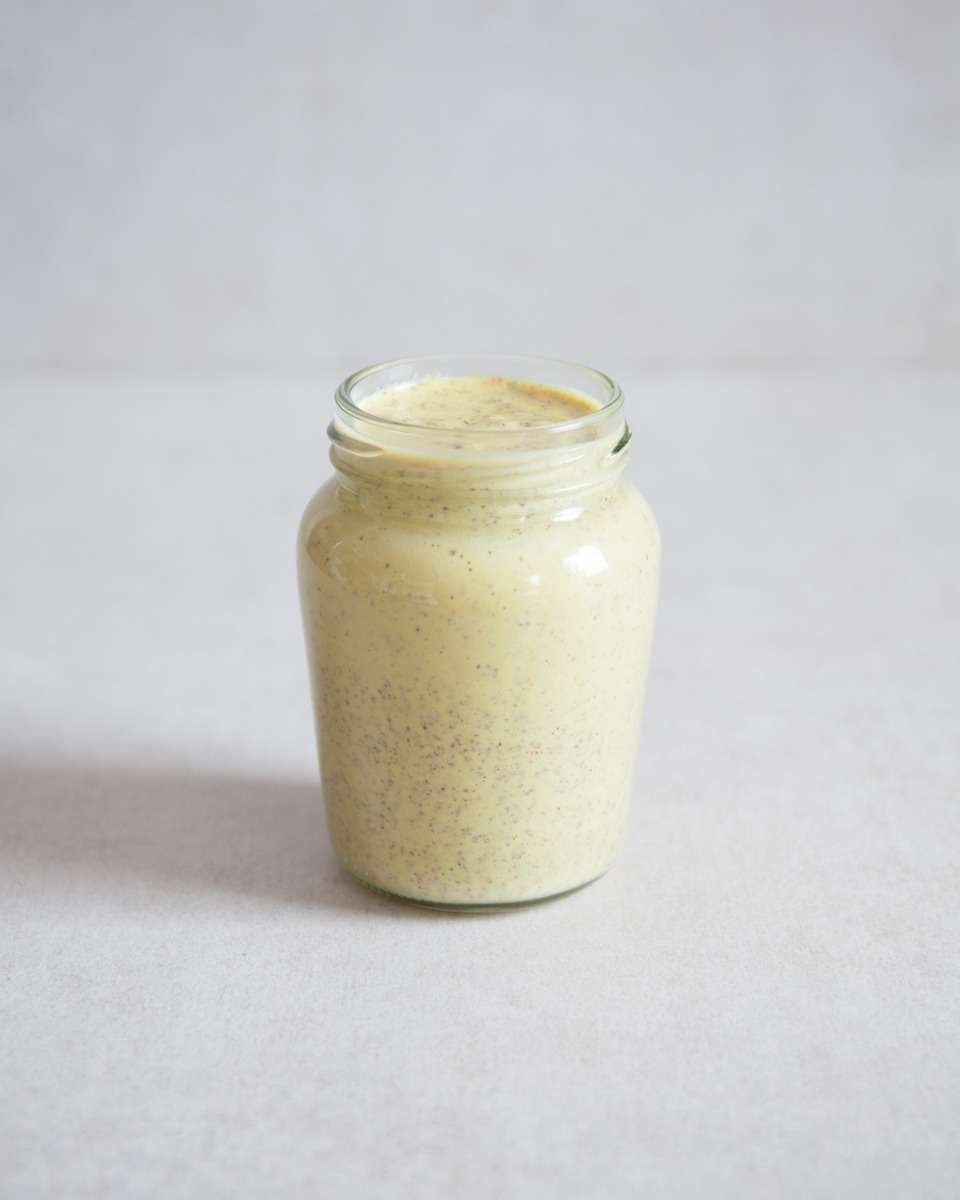Homemade Dijon Mustard

Today, the sight of mustard growing amongst grapevines is rare. Most mustard for France’s famous condiment is nowadays imported from Canada, the producer of 80% of the world’s mustard seeds. It’s a dependency that has taken its toll since the beginning of summer. Drier weather conditions during the previous year caused the Canadian crop to fail, resulting in a fraction of mustard seeds available for export and a countrywide mustard shortage in France.
Luckily, the passionate home cook will still be able to buy smaller quantities of mustard seeds in grocery stores or online. And with just three ingredients, it couldn’t be easier to turn them into homemade Dijon mustard. Traditionally, the mustard seeds are soaked and blended in verjus, a juice made from unripe wine grapes. Verjus is less accessible today and therefore often swapped for a combination of white wine and white wine vinegar to replicate the depth of the grapes while keeping a balancing acidity.
makes around 400 ml mustard
Ingredients
-
100g black mustard seeds
-
150 ml of white wine (I used Sauvignon Blanc)
-
150 ml of white wine vinegar
Method
Soak the mustard seeds together with the white wine and white wine vinegar overnight in the fridge.
The next day, pour the seeds and liquid into the jug of a blender and add 1 tsp (10g) salt. Then blend as smooth as possible, but no longer than 2 minutes so that the mustard seeds don’t heat up, which would affect the colour and flavour. Pass the blended mustard through a fine sieve, store it in an airtight jar and refrigerate it overnight to let the flavours develop. It will change dramatically in aroma and heat over a few hours, so don’t skip this step before consuming.

Dijon Mustard
Ingredients
- 100 g black mustard seeds
- 150 ml white wine (I used Sauvignon Blanc)
- 150 ml white wine vinegar
Instructions
- Soak the mustard seeds together with the white wine and white wine vinegar overnight in the fridge.
- The next day, pour the seeds and liquid into the jug of a blender and add 1 tsp (10g) salt. Then blend as smooth as possible, but no longer than 2 minutes so that the mustard seeds don’t heat up, which would affect the colour and flavour. Pass the blended mustard through a fine sieve, store it in an airtight jar and refrigerate it overnight to let the flavours develop. It will change dramatically in aroma and heat over the course of a few hours, so don’t skip this step before consuming.
